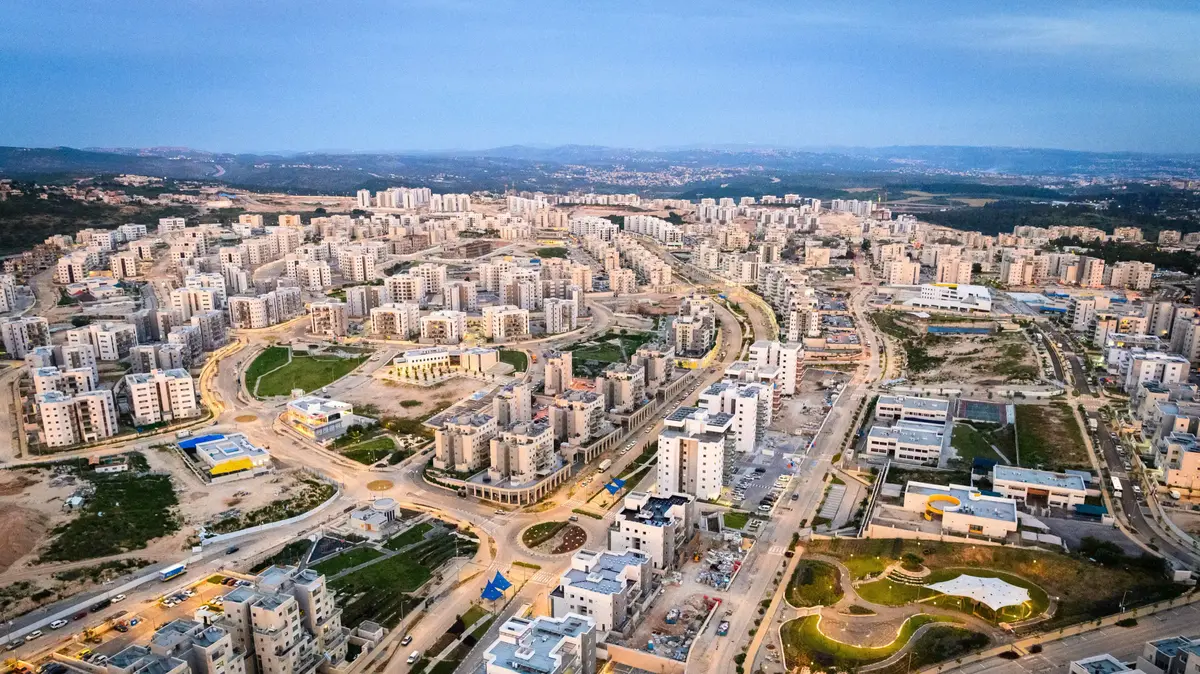In 1948, the population of Israel numbered about 717,000.
In 2020, the number reached more than 9 million inhabitants, and the figure is expected to double within 40 years to more than 18 million in 2060, according to new data published today (Monday) by the Central Bureau of Statistics in Atlas, which presents statistics in Israel from its inception in 1948. For 2018.
According to the data presented in the atlas, the most densely populated areas in the country during this period remained the districts of Tel Aviv and the center.
The Tel Aviv sub-district was crowded in the first years of the state, and has remained so to this day.
In 2018, the Tel Aviv sub-district had 8,300 square kilometers. In 2035, the Tel Aviv sub-district is expected to include 10,800 residents per square kilometer.
From the Atlas of the Central Bureau of Statistics,
The atlas presented by the CBS shows the development of the State of Israel in the fields of demography, society and the economy and in a variety of other fields. To Israel, which contain data on the country's 70th year.
The atlas was published in a limited edition, and was published online on the CBS website. It includes a variety of maps and historical charts scanned from the original and presented in a contemporary design.
Between the cities and the kibbutzim
CBS data show that in 1948, 77% of the Jewish population in the country lived in 29 urban localities, numbering 2,000 inhabitants and more. 70 years later, the figure rose to 92% of the total population in 258 urban localities. In 1948 it was a locality One large one has more than 100,000 residents - Tel Aviv-Yafo, and in 2018 there were already 15 such localities.
From the Atlas of the Central Bureau of Statistics,
The percentage of kibbutzim decreased from 48% of all localities in the country in 1948 to 22% in 2018.
The population of the kibbutzim, which was 8% of the total Jewish population in 1948, decreased in 2018 to 2% of the total population.
The data also show that Jerusalem is approaching one million residents.
In 1948, the Jewish population in Jerusalem numbered about 83,000 residents out of about 717,000 Jewish residents in Israel.
One in eight Israelis was a Jerusalemite - and this trend has been preserved.
In 2018, one in 9 Israelis is a Jerusalemite.
With a population of more than 900,000 inhabitants in 2018, Jerusalem is the largest city in Israel and is expected to be the first city in the country to cross the million million mark.
Percentage growth with an academic degree
Another statistic is that the percentage of Jews born abroad in the country is declining. In 1948, in 17 areas out of 19 in the country, the percentage of Jews born abroad was more than 45%, and in 14 areas of them - more than 60%.
In 2008, in each of the areas, less than 45% were Jews born abroad.
From the Atlas of the Central Bureau of Statistics,
Most of the immigration in the years 1948-1903 was from the various and leading European countries were: Poland, Romania, Germany and Russia.
The increase in the years 2018-1990 was more diverse, and the leading countries were: the (former) USSR, Ethiopia, France and the United States.
Along with the fact that the population of Israel is considered young, the percentage of people aged 65 and over in the various regions of the country has been constantly increasing over the years.
This trend is noticeable in areas along the Mediterranean and in the northern valleys.
Data from the various censuses show that the percentage of those with an academic degree has been on the rise over the years.
In 2018, in most regions of the country, the percentage with an academic degree out of those aged 15 and over was at least 15%, while in 1972 the figure in each of the regions was less than 10%.
In the 1961 census this question was not asked at all.
From the Atlas of the Central Bureau of Statistics,
Most of the agriculture - in the Gaza Strip
The bureau's data show that 64% of the Tel Aviv district is built-up areas, in the central district, which surrounds the Tel Aviv district - 24%, and in the south only 1.6%.
Of the total built-up areas in the country, 66% are residential.
Most of the agriculture is in the Gaza Strip.
40% of the agricultural crops in the country are in the areas near the Gaza Strip, from Malkish to Ashdod.
Other significant agricultural concentrations are found in the Jezreel Valley, the Lower Eastern Galilee and the western Sharon.
In Sharon, more money is spent.
Similar to large cities such as Haifa, Ramat Gan and Tel Aviv-Yafo, the average monthly expenditure per capita in the cities of Sharon was among the highest in the country.
What are the most expensive residential cities in the country?
Unsurprisingly, Israelis like to vacation in Eilat.
The southern city is breaking national records in the number of hotel nights.
In 2018, before the outbreak of the corona plague, about 7 million overnight stays were recorded in the city - 90% of them by Israelis and the rest by tourists.
A similar trend was recorded in the Dead Sea, with 75% of overnight stays being Israeli.
In Jerusalem and Tel Aviv-Yafo, on the other hand, about 75% of hotel stays were by tourists.
In Tiberias, Netanya and Herzliya, the division between Israelis and tourists was almost equal, with a slight tendency in favor of tourists.
From the Atlas of the Central Bureau of Statistics,
The data also show that high-tech is at the center.
Most start-up companies in Israel are concentrated in the Tel Aviv District, followed by the Central District and the Haifa District.
The Tel Aviv and Central Districts concentrate the majority of research and development expenditures in the business sector, with 65% of all expenditures in the country.
The roads with the highest traffic counts are in the Gush Dan area, Road 6 and Road 1 between Tel Aviv and Jerusalem.
They are followed by the western Galilee region and the northern entrance to Be'er Sheva.
The cities with the highest average residential apartment value are in the Sharon and the center.
The five most expensive cities in the country are Tel Aviv-Yafo, Givatayim, Rosh HaAyin, Ramat Gan and Herzliya.
Jerusalem is in sixth place.









